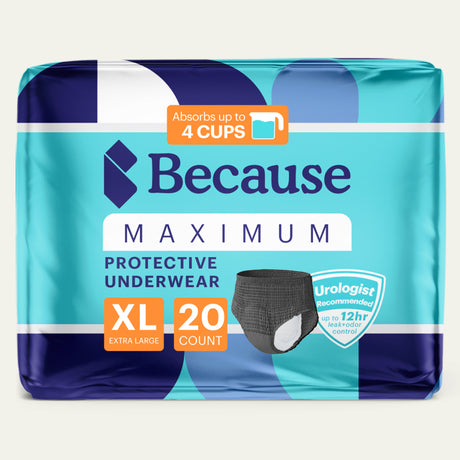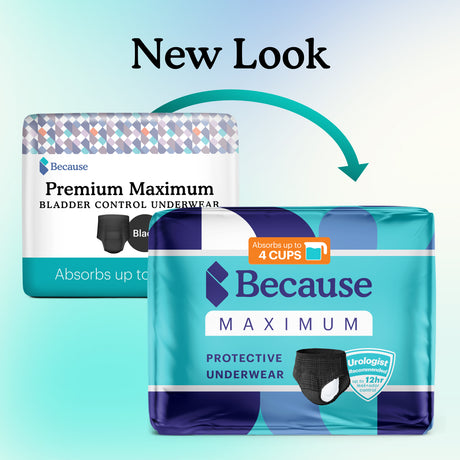Medically reviewed by Dr. Kerac Falk, MD, FACOG.
For individuals who have grappled with the challenges of urinary incontinence, the decision to undergo bladder sling surgery can be transformative. This procedure offers freedom from the burden of urine leakage, along with renewed confidence and quality of life.
If you or a loved one is considering bladder sling surgery, it’s natural to have questions about the journey ahead. In this blog post, we’ll provide you with a clear roadmap, informed insights, and practical advice to guide you through the bladder sling surgery procedure and recovery process.

What is Bladder Sling Surgery?
Bladder sling surgery, also known as a mid-urethral sling procedure, is a surgical intervention designed to treat stress urinary incontinence. The purpose of the surgery is to provide support to a weakened or damaged urethra, helping to prevent involuntary leakage.
The central element of the procedure involves the placement of a bladder sling. The sling itself is a supportive mesh-like material that can be synthetic or sometimes made from tissue taken from your own body.
There are different types of slings, including tension-free vaginal tape (TVT) and transbturator tape (TOT). Your doctor will help you decide which procedure is right for you.
Bladder Sling Surgery Procedure Overview
Bladder sling surgery is generally performed under general anesthesia. The surgeon will make small incisions into the lower abdomen to serve as access points for the surgical instruments and the placement of the sling.
The surgeon will position the sling beneath the urethra, creating a supportive hammock-like structure. This elevation of the urethra helps prevent urine leakage during physical activities that put pressure on the bladder.
After the sling is securely in place, the surgeon will close the incisions using sutures or surgical staples. These incisions are typically small, minimizing the potential for scarring and promoting a faster recovery.
Following the procedure, you will be closely monitored in the recovery area to ensure that you are waking up from the anesthesia safely. Once you are fully awake and stable, you may be allowed to return home the same day, or in some cases, you may need to stay overnight for observation.

Preparing for Bladder Sling Surgery
The first step towards bladder sling surgery typically begins with a consultation with a urologist or a urogynecologist. During this initial appointment, your medical history will be reviewed, and a physical examination will be performed, and tests to assess your bladder function will be conducted.
Once the severity of your condition has been assessed, your urologist will explain the potential benefits and risks, and help you decide if the surgery is right for you. This is an excellent opportunity to ask any questions you may have.
Your surgeon may provide specific instructions regarding medications and supplements that may need to be temporarily discontinued leading up to the procedure. Certain lifestyle adjustments may also be recommended, such as avoiding smoking, to minimize potential risks and promote the fastest recovery possible.
Bladder sling surgery is generally considered minimally invasive, but it’s still surgery, and you’ll need some assistance during your recovery. Arrange for a friend or family member to drive you home after your procedure, and arrange for help with household tasks during the first few days of your recovery.
Give some thought to your postoperative recovery period. Create a comfortable place to rest during the day, and prepare some meals in advance. Stock up on any necessary supplies, such as loose-fitting clothing and sanitary pads to ensure that you have everything you need to recover comfortably.
What to Expect After Bladder Sling Surgery
Here’s what to expect in the hours and days immediately following bladder sling surgery.
Hospital Stay
In most cases, bladder sling surgery is considered an outpatient procedure, meaning you’ll be able to return home on the same day as your surgery. However, depending on your specific circumstances and your surgeon’s recommendations, you may be required to stay overnight for observation.
If you do spend a night in the hospital, the medical staff will closely monitor your vital signs and ensure that you’re recovering well. They will provide instructions on how to care for the surgical site and any catheters or drainage tubes that may be in place. You’ll also receive guidance on when it’s safe to resume eating and drinking.
Immediate Physical Effects
In the days immediately following the surgery, it’s normal to feel some swelling and discomfort around the surgical site. You may feel weak and tired for a few days, with some cramping in your lower belly. Some bleeding and spotting is also normal and can last up to a month.
You may notice some improvement in urine control right after surgery, but it can take some time for the full benefits to take effect. Some patients may still experience minor leakage as their bodies adjust, while others may find it harder to empty their bladder during the first week or two.
Depending on the specific procedure and your surgeon’s preference, you may have a catheter or drainage tube in place. Your healthcare team will provide instructions for its care and removal.
You may also experience some limitations in your mobility due to discomfort. It’s crucial to follow your surgeon’s advice on resuming regular activities gradually. You may be able to eat your normal diet, but if your stomach is upset, stick to bland, low-fat foods. Drink plenty of fluids to help avoid constipation.
Pain Management
Many patients experience little to no pain after the procedure, but your surgeon may prescribe pain medication to help control any discomfort during the early stages of recovery. Be sure to take these medications as directed and report any uncontrolled pain to your medical team.
Be sure to give your body the time it needs to heal by getting adequate rest and sleep. Applying ice packs to the surgical site can help to reduce swelling and discomfort. Finding a comfortable position, such as elevating your legs, can also help to alleviate pressure.

Bladder Sling Surgery Recovery at Home
Most of your recovery can take place in the comfort of your home. Here’s what to expect as you transition from the hospital or surgery center to your own space.
Incision Care
Be sure to follow your surgeon’s instructions for caring for the incision site. When you’re doctor says it’s okay to take a shower, clean the area with mild soap and water, then gently pat it dry. Avoid any scrubbing or harsh ingredients like alcohol or hydrogen peroxide, which can slow healing.
If there are strips of tape covering your incisions, allow them to fall off naturally. You can cover the area with a bandage if it rubs on your clothes, but be sure to change it daily. Be on the lookout for any redness, swelling, warmth, or discharge, which can be signs of infection. Contact your healthcare provider immediately if you suspect infection.
Typical Recovery Timeline
Recovery time after bladder sling surgery can vary from person to person, but here’s a general timeline to help you understand what to expect.

Physical Activity and Limitations
During the early stages of recovery, your surgeon will most likely instruct you to avoid heavy lifting, strenuous exercise, and activities that put pressure on the abdominal area. Instead, focus on gentle activities such as walking, which can help improve circulation and reduce the risk of blood clots.
Managing Anxiety or Depression After Bladder Sling Surgery
It’s not uncommon to experience feelings of anxiety or depression during the recovery process. The physical and emotional toll of surgery can be challenging. Reach out to your healthcare provider if you’re struggling with these feelings.
How to Pee After Bladder Sling Surgery
You may notice changes in your urinary function after surgery. It’s normal to have some hesitancy or discomfort while urinating initially. Try to relax and take your time when using the restroom. Deep breaths can help. Some patients also find that using warm water in a spray bottle can ease discomfort.
Potential Complications After Bladder Sling Surgery
While bladder sling surgery is generally safe and effective, potential complications can occur. Common issues to watch for include signs of infection, such as fever, increased pain, redness, or discharge at the incision site. Some patients also have difficulty emptying the bladder.
Mesh erosion is a very rare, but potential complication characterized by pain and bleeding. If you experience any of these issues, be sure to contact your surgeon right away.

Life After Bladder Sling Surgery Recovery
Once you’re on the path to recovery, you may be wondering what to expect in the months and years going forward.
Getting Back to Work
One of the first concerns for many individuals is returning to work. The timeline will vary based on the type of job you have and how physically demanding it is. Most people can return to sedentary or office-based work within a week or two after surgery.
For jobs that involve heavy lifting or strenuous physical activity, it might take up to six weeks. Be sure to communicate with your surgeon and your employer about any necessary accommodations during your transition back to work.
Resuming Exercise and Sexual Activity
In most cases, you can gradually resume exercise and sexual activity when you feel comfortable and have received clearance from your medical team. Many individuals are ready to resume normal activity in about six weeks.
After several weeks, your doctor may also suggest that you do pelvic floor exercises to tighten and strengthen your pelvic muscles. If you experience pain or discomfort when doing these exercises, stop doing them until you talk to your doctor.
Frequent Urination After Bladder Sling Surgery
You may notice changes in your urinary habits after surgery, including more frequent urination. This is generally a positive sign, as it indicates improved bladder control. However, it’s important to distinguish between improved control and overactive bladder symptoms.
If you find that you’re urinating excessively or experiencing urgency that interferes with your daily life, consult your healthcare provider. It’s possible that additional treatments or adjustments in your postoperative care plan may be needed.
Moving Forward After Bladder Sling Surgery
Bladder sling surgery is known for its effectiveness in treating stress urinary incontinence. Most individuals experience lasting relief from their symptoms, but others may require additional incontinence treatment in the future.
For example, bladder sling surgery does treat stress incontinence, but not urge incontinence. Individuals with more than one type of incontinence may require additional treatment strategies to manage their symptoms.
How Long Does Bladder Sling Last?
The durability of a bladder sling can vary depending on various factors, including the type of sling used, your overall health, and your lifestyle. In most cases, bladder slings can provide long-lasting relief from urinary incontinence.
However, some individuals may experience changes in bladder function over time. If you ever notice a recurrence of urinary incontinence symptoms, reach out to your healthcare provider. They can provide guidance on potential follow-up treatments or strategies to maintain your bladder health.

When to Reach Out to Your Doctor
Timely communication with your healthcare provider can help to address concerns and ensure the best possible outcome. If you notice signs of infection or uncontrolled or severe pain, reach out to your doctor right away.
Ongoing difficulty urinating or discomfort that doesn’t improve as expected should also be reported to your doctor. If you notice a return of symptoms or unexpected changes in your urinary function, discuss these concerns with your doctor as well.
Bright red vaginal bleeding or bleeding from the incisions should also be reported to your doctor immediately. Nausea or difficulty drinking fluids is also a cause for concern. And finally, if you experience pain or swelling in your calf, thigh, groin, or the back of your knee, call your doctor.
Adhering to your scheduled follow-up appointments is crucial for long-term monitoring and maintenance of your urinary health. Even if you feel well, attend these appointments as recommended by your doctor.
In Conclusion
Bladder sling surgery is a transformative procedure with the potential to significantly improve your quality of life. Beyond the practical knowledge, we want to emphasize the importance of self-care and self-compassion. Your bladder sling surgery recovery is unique, and it’s okay to have moments of uncertainty.
Throughout this journey, remember that you’re not alone. Your healthcare team, family, and friends are all dedicated to your well-being and recovery. Lean on their knowledge and support throughout every step of the process.
If you're struggling with incontinence, join one of our private support groups today!
Women's Incontinence Support Group
Men's Incontinence Support Group
About the Expert:
Dr. Falk is a fellowship-trained urogynecology subspecialist, double board-certified in both Obstetrics and Gynecology, as well as Female Pelvic Medicine and Reconstructive Surgery. He has expertise in the treatment of female pelvic floor disorders, which encompass many common but infrequently-discussed conditions which significantly impact women’s quality of life. These include complex disorders such as urinary and bowel incontinence, pelvic organ prolapse, childbirth injury, genital fistulas, recurrent urinary tract infection, and bladder pain.
Sources:
American College of Obstetricians and Gynecologists. (n.d.). Surgery for Stress Urinary Incontinence. https://www.acog.org/womens-health/faqs/surgery-for-stress-urinary-incontinence
ClinicalTrials.gov. (n.d.). ClinicalTrials.gov Identifier: NCT02316275. https://clinicaltrials.gov/ct2/show/NCT02316275
Meng, E., & Lo, S. F. (2017). The Role of Urodynamic Studies in the Era of Advanced Renal Cell Carcinoma Treatment. Kidney Cancer Journal, 15(1), 1-9. https://www.ncbi.nlm.nih.gov/pmc/articles/PMC5754394/
Madersbacher, H., & van Ophoven, A. (2010). Neurogenic bladder in spinal cord injury patients. Indian Journal of Urology, 26(2), 198-207. https://pubmed.ncbi.nlm.nih.gov/20803179/
































